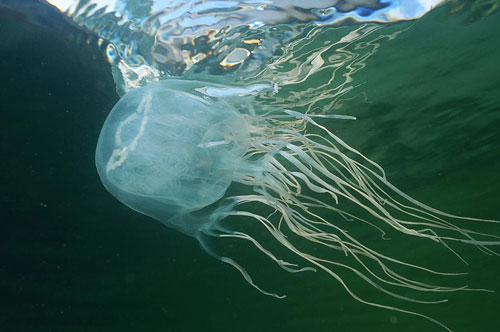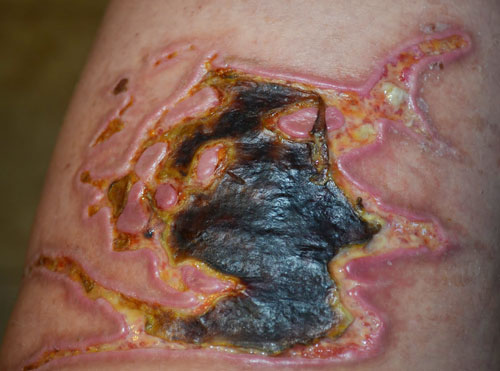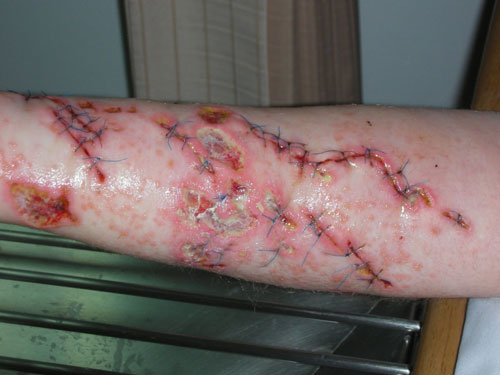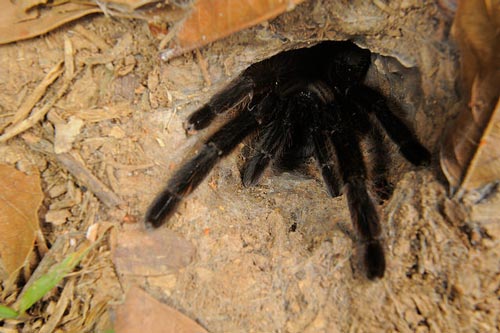Box jellyfish are highly dangerous invertebrate species. They are appropriately named due to their cube-shaped body structure and long trailing tentacles. Several species of box jellyfish, such as Carukia Barnesi, Malo Kingi, and Chironex Fleckeri, possess extreme venomousness.
In addition to their venomous nature, box jellyfish are remarkably fast swimmers. They can reach speeds of up to 1.5 to 2 meters per second (about 4 knots or 7.4 km/h; 4.6 mph), surpassing the swimming capabilities of most humans, especially children. The average human sprinting speed is 1.64 meters per second.
These creatures possess intricate body structures as well. They boast a well-developed nervous system that enables swift movement, brain-like structures, and twenty-four eyes capable of discerning light and darkness.
Unlike many other jellyfish, box jellyfish display notable agility in navigating around obstacles and swiftly swimming to their desired destinations. With long tentacles, they can grow up to 10 feet in length and weigh up to 4.5 pounds.

A Chironex Fleckeri can be identified by its tentacles, which trail distinctively from its body.
Contents
Box Jellyfish in Thailand
Box jellyfish have long been touted as one of, if not the most, venomous creature in the world, though it’s important to note that some species of box jellyfish leave a sting that is fairly mild.
The species we are most concerned with is the Chironex Fleckeri (pictured above), which has been responsible for more than 64 deaths in Australia since 1884.
The venom from the Chironex Fleckeri is powerful enough to degrade cell walls, causing them to leak potassium, a condition called hyperkalemia.
Hyperkalemia is an assault on the cardiovascular system and often results in a collapse, and then death, all within a 5 minute time period.
The serious bodily damage caused by this jellyfish can be mitigated by proper beach netting to prevent jellyfish getting close to swimmers, and immediate use of vinegar as a first aid solution. Though sadly these simple safety precautions are often neglected.
Box jellyfish stings are also particularly dangerous because it can be difficult to identify a sting until after the jellyfish’s venom has spread. In addition, the box species is hard to spot because of their transparency in shallow water.
As we will explore, box jellyfish have been reported in various areas of Thailand's coastal waters. Some specific locations where box jellyfish sightings or incidents have been recorded in the past include popular tourist destinations such as Koh Phangan, Koh Samui, and the Andaman Sea region, which includes places like Phuket, Krabi, and the Phi Phi Islands.
However, it's important to note that the presence and distribution of box jellyfish can vary, and it's advisable to consult local authorities, beach officials, or lifeguards for the most up-to-date information on box jellyfish sightings and safety precautions in specific areas of Thailand.

A sting victim's leg after a sting in the north of Koh Samui (2012)
High Profile Box Jellyfish Attacks in Thailand
Statistics aren't easy to verify in Thailand, and stings are likely under reported. That said, serious cases are well documented in the media.
While encountering box jellyfish in Thailand is relatively uncommon, there have been a number of incidents that serve as cautionary reminders.
- In 2024, Zoe Cahill, a 23 year old woman from Queensland in Australia was hospitalised for over a month after an attack on Koh Phangan while swimming near the shore of Zen Beach. Cahill made it back to the shore before collapsing. People rushed to her aid, dousing her with bottles of vinegar while a nurse performed CPR. Of the attack, Cahill recalled, “I thought I saw what looked like little bits of plastic in the ocean, and within seconds this jellyfish stung me. It literally felt like electricity had shot through my body.”
- In 2022, a six-year-old Israeli girl was stung by a box jellyfish on the beach in Koh Phangan. The child's heart stopped after she was stung. She was provided first aid on the beach which resuscitated her and was then taken to Surat Thani Hospital by helicopter. She survived.
- In 2021, a nine-year-old Israeli boy playing in the shallows with friends on Haad Rin Beach, Koh Phangan, died after being stung.
- In 2019. a ten-year-old Russian boy survived an attack from a box jellyfish while swimming at Lamai Beach in Koh Samui
- In 2014, on Koh Phangan, a 5-year-old French boy lost his life after being stung by an unknown venomous jellyfish.
- In 2015, on the same island, a 31-year-old Thai woman visiting Tambon Ban Tai suffered a fatal sting while swimming.
- In 2015, on the neighboring island of Koh Samui, a 20-year-old German tourist met a similar fate after encountering a box jellyfish on Lamai beach.
- In 2015, a female Thai tourist died after being stung by a box jellyfish while swimming off Koh Phangan
- In 2002, an Australian man died following stings to his legs on the ill-fated Haad Rin Beach, Koh Phangan

Zoe Cahill was stung on Koh Phangan.
High Risk Areas
Based on a 2016 study by Thai researchers, the islands of Koh Samui and Koh Phangan have the highest incidence of fatal and near fatal box jellyfish cases in Thailand.
The aforementioned cases, all widely covered in the media, would suggest Koh Phangan is Thailand's box jellyfish hotspot; Haad Rin beach, in particular. However, the cases looked at by the study shows Koh Samui as the highest offender.
Among 15 cases with information of place of incidence, eight cases (53.3 %) occurred on Koh Samui and another six cases (40 %) occurred on Koh Phangan. One case did not occur in the water by the beach; that of a man who took off his wet suit on a boat after diving and was stung on his left elbow by a tentacle attached to the wet suit.
In terms of beaches, the same eleven cases break down as follows:
East Rin beach of Koh Phangan (27.3 %), Chawang beach of Koh Samui (27.3 %), and Bo Phut of Koh Samui (18.2 %). Two cases occurred on Lamai beach of Koh Samui, and Khuat beach of Koh Phangan.
Statistics released by Koh Samui hospital, up to 2020, report the following number of total sting incidents:
- 2016 42 cases
- 2017 47 cases
- 2018 17 vases
- 2019 8 cases
- 2020 8 cases
Incidents have also been reported along the west Strait of Malacca; most notably Krabi, Phuket, Ko Lanta, and Koh Phi Phi,
Thailand’s Andaman Coast, which sees much deeper water, is considered to be the safer in terms of jellyfish activity. However, both Hua Hin and Cha-am do suffer serious jellyfish influx during the wet season. One serious sting incident is pictured later on in this article.
Highest Risk Months: When Box Jellyfish Come Inshore
More box jellyfish appear during Thailand’s wet monsoon season, owing to the increased activity of the ocean and the changing winds that bring these jellyfish closer to the shoreline, where swimmers are more likely to be.
This season runs from May/June through October, with the most rain in August, September and the beginning of October.
If we look at the 15 analyzed cases since 1997: The highest incidence by month was August (33.3 %), September and October (20%), and July (13.3 %). Eight cases occurred on Samui (53.3 %), 6 cases on Koh Phangan island (40%), and one case on a boat.
* Research study by Lakkana Thaikruea and Potjaman Siriariyaporn (1).
Box Jellyfish Sting Symptoms
Unfortunately, many victims don’t realize that they have been stung by a jellyfish because the transparent nature of the species makes it difficult to spot in the clear waters.
Sting victims have reported a variety of symptoms from the venom, including:
- Severe pain (burning and prickling)
- Skin swelling
- Visible tentacle tracks on body that are brown, red or purple
- Itching
- A feeling of numbness and tingling
- Difficulty breathing, swallowing and speaking
- Shivering and sweating/fever
- Spreading, throbbing pain
- Irregular pulse/ heart failure
Effectiveness of Vinegar Treatment
When analyzing the use of vinegar in the aforementioned study: of six fatal cases, only one had vinegar poured on the injury. Among six surviving cases, three received the vinegar treatment. One received vinegar as first aid at the hospital after 10–15 min being stung.
Studies have shown that rinsing jellyfish stings with seawater can actually exacerbate the situation by spreading venom capsules further. Similarly, the application of cold packs has been found to stimulate the release of more venom.
The notion of using urine as a remedy, made famous by an episode of Friends, has also been found to worsen the effects of jellyfish stings. Other substances such as baking soda, shaving cream, soap, lemon juice, alcohol, and cola have yielded similar ineffective results when used as remedies for jellyfish stings.

A 26 year old American woman stung by a box jellyfish on September 3rd 2010 at a beach on Pha-ngan island. She lost consciousness and was revived following resuscitation. Vinegar was applied.
How to Treat a Jellyfish Sting
- Safely remove the individual from the water.
- Thoroughly wash the affected area with vinegar for a continuous 30-60 seconds. This helps prevent further venom release.
- Carefully lift off any remaining tentacles using a stick or gloved hand.
- Immerse the affected area in hot water, ideally around 45°C (105°F). Alternatively, a hot shower can be used to retain a higher number of red blood cells.
- If feasible, immobilize or splint the stung area and keep it at heart level (neutral to gravity).
- Seek immediate medical attention.
Note: sting victims should not drink alcohol, take medicine or eat any food. Seek medical treatment as quickly as possible or apply anti-venom if available. In instances of severe stinging, CPR might be needed as the swimmer might go into anaphylactic shock.
How to Help a Sting Victim
- Stay calm and composed, ensuring that you and the sting victim remain level-headed. Safely remove the individual from the water.
- Ask someone to call emergency services and be prepared to transport the swimmer to a clinic or emergency room.
- If possible, locate vinegar as quickly as possible. While some Thai beaches may have vinegar stands, it's important to be aware that vinegar may not always be readily available. In a recent incident in March of this year, a mother had to approach beachside restaurants to obtain vinegar for her son, who had been stung by a box jellyfish.
- Keep the victim relaxed and apply a continuous stream of vinegar to the affected area for 30-60 seconds. Use a stick or a covered hand to gently remove any remaining tentacles. Avoid scraping them off, as this may cause the release of more venom.
- If accessible, immerse the affected area in hot water or help the victim take a hot shower. If anti-venom is on hand, administer it promptly.

Stings often require major surgery and skin grafts, and of course stitching – as we see from this sting in Cha-am, Thailand
Precautionary Measures
Prevention is always the best cure! Follow this advice to stay safe.
1. Avoid Night Swims
Warm shallow waters with sandy bottoms seem to attract box jellyfish, and an overwhelming consensus is that they are quite active when the sun goes down. Avoid swims at dusk or at night.
2. Swim in Netted Areas
A number of beaches in Thailand now have jelly fish nets to protect swimmers. In 2021, nets were installed by the Department of Marine and Coastal Resources on Lamai and Chaweng Beaches in Koh Samui. If there are nets, make sure you swim within the cordoned off area.
3. Swim at Beaches with a Vinegar Stand
The active maintenance of vinegar stands on Thai beaches is another excellent way to mitigate the effects of a jellyfish sting.
Those who are injured by box jellyfish and treated quickly with vinegar have a statistically higher chance of survival and will suffer a lower degree of pain and scarring.
Check that the beach vinegar stand has a full bottle, or better still, take your own!
4. Get a Stinger Suit
Lycra swimming/dive suits are a good choice for protection, and there are now dedicated stinger suits available.
The difference between a wet suit or dive suit and a stinger suit is as follows:
- Stinger Suits and Dive Skins: suitable for water temperature 20°C or 70°F and above;
- Wetsuits, Dive Suits and Drysuits: suitable for water temperature between -2 and 25°C or 28 to 77°F.
The suits are both effective and cover arms and legs to the wrists and ankles. It is definitely worth considering suits for children in particular as they are more vulnerable in terms of not being able to spot the danger and withstanding the sting.
5. Use Sting Lotion
You can buy jellyfish sting prevention lotion that doubles as sunscreen. However, be aware that while clinical trials appear to show positive results, there is no evidence that it will prevent death in the event of an attack by the dangerous box jellyfish species.
It can't hurt to wear it, though, as it may help for stings from non-lethal jellyfish.
6. Make Sure You Have Good Travel Insurance
Unfortunately, even if sting victims are able to receive immediate medical attention, there is still the chance that rural emergency clinics are not up-to-date with the latest science on treating stings.
You will need post trauma treatment too, which is essential for a full recovery.
With this in mind, make sure you travel with comprehensive medical insurance. This will ensure that you have the ability to be seen at a top hospital with top surgeons, or even a plastic surgeon if you need a skin graft.
+ Read up on best cover travel insurance here

A 31 year old Chinese man stung on September 12th 2015 at Chaweng beach, Samui island. He lost consciousness & received vinegar & cardiopulmonary resuscitation at the hospital (10–15 min after being stung). He was admitted into Intensive Care Unit and put on a respirator.
Remember: Box jellyfish stings are rare but they can happen. Don't lose sleep with worry. Instead, follow the precautionary advice in this post and enjoy your holiday.
Tips to Start Planning Your Trip Now
Book Your Accommodation:
Best hotel rates are found at Agoda, and Hotels.com.
Don’t Forget Travel Insurance:
Travel insurance protects you against illness, injury, theft, and cancellations. I never travel without it. I’ve been using SafetyWing for years. You should too.
Want to Visit the Best Beaches?
Most tourists do not know about these. See here
Last Updated on



Elad says
thank you for the informative, and detailed article. it really educated me. had a few follow up questions (only if you're in the mood :))
1. is there a safe season? i understand that the wet season is dangerous (july to october). can we say that november to june is safe? i'm asking since in december it's still raining quite heavily.
2. why does the wet season drives the boxes to the shores?
3. in which distance from the shore is it safe to swim in the safe season?
thanks in advance!
Dec 08, 2023 at 6:48 pm
TheThailandLife says
Dec 08, 2023 at 7:15 pm
elad says
Dec 08, 2023 at 7:19 pm
TheThailandLife says
Dec 08, 2023 at 8:47 pm
Elad says
Dec 09, 2023 at 11:12 am
Jana Teneva says
Nov 21, 2023 at 7:58 pm
TheThailandLife says
Nov 22, 2023 at 6:25 pm
CV says
Jul 17, 2023 at 7:27 pm
Adrian Martin says
These stands hold 1 litre bottles, and the vinegar is coloured, possibly to discourage it being used on the fish and chips.
Surf clubs around Australia have signs warning of the various marine hazards, ranging from crocodiles in the north and jellyfish along the coast.
Southern waters don't have these problems apart from seasonal blue bottles.
Jul 17, 2023 at 4:50 pm
TheThailandLife says
Jul 17, 2023 at 4:52 pm
TheThailandLife says
Jul 17, 2023 at 4:55 pm
Adrian Martin says
Let's hope the really nasty ones such as Irakunji don't make it down the Queensland coast as the seas warm.
Jul 17, 2023 at 4:22 pm
TheThailandLife says
Jul 17, 2023 at 4:25 pm
Kirsty says
May 08, 2024 at 10:20 pm
TheThailandLife says
May 08, 2024 at 10:42 pm
Ian says
Aug 03, 2024 at 11:15 am
TheThailandLife says
Aug 03, 2024 at 11:52 pm
Ian says
Aug 04, 2024 at 9:26 pm
TheThailandLife says
Aug 05, 2024 at 2:50 am
Ian says
"I would imagine this would have been a Crocodile Needlefish (otherwise known as a Hound Fish). They are unlikely to have seen you as a threat - and I would have thought it is likely there were a couple of Silverside fish in between you and it, which it predates on near the surface - therefore leaping at them, and hitting you"
They are a long type fish, as I googled them. Makes sense. I was just in its way.
Cheers
Aug 06, 2024 at 1:54 pm
TheThailandLife says
Aug 06, 2024 at 2:49 pm